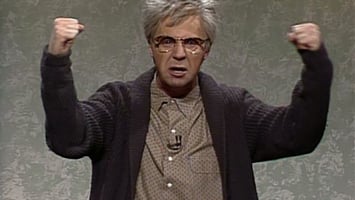The sophomore slump happens. Musicians battle this regularly. The first album is killer. Lots of...
Back at One
Phrasing is a term used to describe a complete musical thought, such as a measured bar of four or eight. In dance, it’s a response to music from which a composition of movement or gesture in a small way builds towards the whole. It’s like a good idea that is compounded to strengthen that core idea.
We can apply this thinking to various aspects and concepts in life. Democracy, for example, is an 8-bar piece of music that opens the door for a responsive dance that is much more like a Paso Doble rather than a Waltz, but nonetheless dynamic and beautiful. Our ability to compose and choreograph daily life ought to be grounded in phrasing.
Think of the daunting task it would be to devise a routine for 12 dancers. Can you respond to the music, develop the movement, master the steps, teach the team and perform as a troupe? It’s overwhelming just to type it, let alone do it all! And while this is certainly the goal of a choreographer, it is not something that each of one them can see holistically. He/She starts with a small core phrase of movement. This movement serves as the anchor to what comes after as well as before.
As we lead people in our various areas of responsibility, a phrase is likely the wisest way to begin. What’s the small gesture, movement or concept that is a right response to the music composition of our companies? Look at the mission, values, vision, but also, look at the flow of communication, the cause of our work and the dynamic diversity of our people. The various skill sets, heritages, work experiences, education, etc. of our people has a song to it. Listen. How does it make your heart and mind respond?
That answer will lead you to the first phrase. Develop goals, methods, SOPs, communication flows, etc. from this phrase. Allow it to serve as core to your development rather than these independent ideas that we work hard to link together. Start from the inside out.
When dancers fuse two forms of style together, it should be danced excellently to show seamless integration. If it’s clunky and disjointed, it’s blatantly obvious. Further, some dance forms are so far apart, that even the best dancer would have a tough time fusing. Similarly, look at the objectives and expectations for your team. Should they be fused together or are they so very different? If it’s too far apart, the employee’s movement is awkward. They are not sure what the next step should be, mostly because there isn’t an intuitive option. It all seems separate and unequal.
So, how do you start? Take the time to listen to the heartbeat rhythm of your organization. Sit deep in its melody. What do you hear? Notice? Feel? Now, respond. Don’t worry about right and wrong now. Just respond. Jot down everything that comes to mind. Hates, loves, brokenness, beauty, shortcomings, victories…all of it. Then allow those brushstrokes to form a picture of sorts. Everything might not fit today, but start with a short phrase. What stands out to you?
Hopefully, you have a trusted co-worker, but a good colleague in your field is good, too. Share with him/her what you have found. See if they can hear and appreciate the music. You are sharing a composition. Don’t worry about how it sounds. Not every symphony is evenly timed, so you’re in good company. Your initial audience of one will give you cues as to where the phrasing should be sharper and more detailed.
And build upon it. Take those notes and move across the stage. How does the movement look now? Can I begin to teach those around me how to navigate the stage? The answer is yes. Come back to that core phrase if you begin to lose your way. It will keep you honest and focused.
Finally, work within your style. I’m a bit more of a street dancer than a ballroom performer. It’s more authentic if the movements I offer sit in that gritty hip-hop flow. However, if I need to stand tall, shoulders back and head tilted, watch me do it. That only comes from knowing who you are first and then being able to adapt to the environment as needed. Start small and in your dance zone. Get comfortable in this, and the opportunity to change styles will become less daunting.
You can do this. It’s not about being the best dancer, so to speak. It’s about responding the music of your organization, developing movement and bringing reactive change through your leadership. And you don’t need tap shoes to do it.




Blog comments